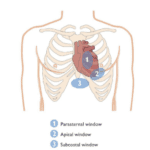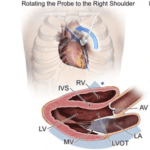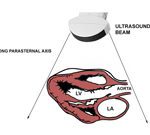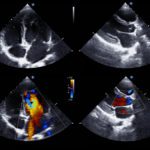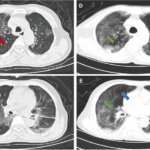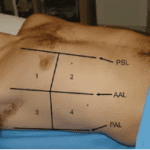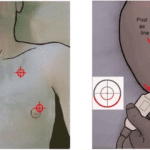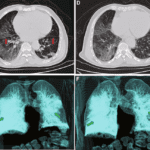The inaugural POCUS World Conference launched in September 2021 delivered innovative and progressive content to both teach and challenge our medical community. Discussions and sessions provided insights to equip and help us better understand the impacts and future of point-of-care ultrasound (POCUS). Today, this powerful modality improves patient care one discipline at a time. Tomorrow, it removes barriers and eliminates disparities plaguing healthcare.
Dr. Diana Dowdy, Certified Nurse-Midwife, led a profound poster session, Developing a Standardized Global Ultrasound Curriculum for Midwives and Skilled Birth Attendants, to heighten awareness on the need for a globally recognized program dedicated to midwife POCUS training. According to Dowdy, in just one day, over 800 women die from childbirth-related causes, there are approximately 5.5 thousand stillbirths, and 2.7 million newborn deaths occur. Low and middle-income countries assume 99% percent of the burden.
POCUS has the potential to change this course. The device’s feasibility, accessibility, and affordability have proven to be the answer medicine is seeking to combat inadequate maternal health. Additionally, POCUS’ ability to promptly diagnose and identify conditions helps eradicate the lack of timely maternal referrals and interventions. Regular monitoring during pregnancy is essential to staying out in front of detriment outcomes. Appropriate intervals for prenatal care visits and routine imaging is critical to guarantee a healthy birthing experience.
The application of obstetric (OB) POCUS in all stages of pregnancy is the ideal objective. It can be utilized in various applications—from diagnosing a patient with vaginal bleeding, for gestational dating, to measuring fetal cardiac activity.
Here are a few scenarios and step-by-step methods for applying OB POCUS.
Determining Estimated Due Date Based on LMP
Determining the gestational age is always the first step. Everything about the pregnancy hinges on the estimated gestational age and should be identified before any OB ultrasound assessment. The approximate due date determines if findings are normal, the appropriate intervals for prenatal care visits, and the timing of certain interventions.
The Naegele’s Rule is based on the last menstrual period (LMP) and can calculate the due date before imaging.
Due Date = Date of the first day of last menstrual period (LMP) + 9 Calendar months + 7 days
Once estimated, use a scan to confirm and verify gestational age. Various approaches include:
OB Ultrasound Transabdominal Approach
The patient should have a full urinary bladder, particularly in the first trimester. They should also be supine.
A curvilinear or phased array ultrasound probe is the ideal transducer choice. The preset should be pelvic or abdomen.
OB Ultrasound Transvaginal Approach
Transvaginal ultrasound is primarily used in the first trimester as signs of early pregnancy are detected better with this approach than transabdominal ultrasound.
The patient should have an empty bladder. The Dorsal Lithotomy position is best, similar to a routine pelvic exam. The patient should have a drape to be adequately covered. You may choose to have a chaperone present with you.
A transvaginal/endocavitary probe is recommended, preset gyn/pelvic. A sterile condom or glove with sterile gel is also suggested.
The indicator should be located at the 12 o’clock position of the probe. Place the gel at the tip of the endocavitary probe and apply a sterile glove or condom over the probe. Application of sterile gel is required once more at the tip of the now covered endocavitary probe.
Mean Sac Diameter (MSD)
The mean sac diameter calculation can also estimate the gestational age prior to the appearance of a fetal pole. During imaging, optimize depth to see the gestational sac. Then obtain a sagittal view of the gestational sac and measure the height and length of the sac. Next, rotate the probe 90º to obtain a transverse view of the gestational sac and measure the width.
Mean sac diameter calculation:
MSD (in mm) + 30 = Gestational age (in days)
Crown-Rump Length (CRL)
Once the fetal pole is present, the gestational age should be estimated by using the crown-rump length measurement. It is the most accurate method for dating pregnancy. This estimate is the measurement between the top of the fetus head to the bottom of the torso.
When scanning, optimize depth to view the entire fetal pole or embryo clearly. Then obtain a proper view of the fetus and measure the crown-rump length using the calculation package. The view of the fetus should be in the mid-sagittal plane. An oblique section or an off-center longitudinal section of the fetus will provide an underestimation of the crown-rump length.
If an OB package is not available with the device, use the CRL formula:
CRL (in mm) + 42 = Gestational age (in days)
GP Code and 1st Trimester Scan Webinar
Review our GP Code and 1st Trimester Scan webinar hosted by Rawan Alsukairi, a registered ARDMS sonographer double boarded in Abdomen and OB/GYN specialties. Learn more about the vitality of POCUS during the first trimester of pregnancy and its impact on maternal health.






